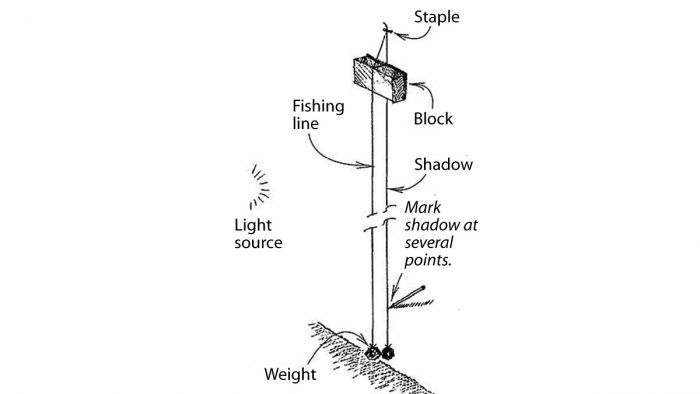
The best way to check or to adjust a level for plumb is to compare it with a plumb line. It can, however, be frustrating to position a level accurately next to a string. Even when you’ve finished cursing after bumping into the string, deciding exactly when your level is parallel with the line ends up being something of a judgment call, the antithesis of the exercise. Here’s a simple way to establish an accurate and handy reference line (see drawing).
First, hang a weighted line next to a convenient and structurally sound wall. Use a fine string, such as fishing line, and hang it as close to the wall as possible. A small hex nut, rather than an actual plumb bob, permits closer positioning. Once the line is steady, activate a light source that is across the room and that is perpendicular from the wall through the string.
The line is now casting a shadow on the wall. Use a sharp pencil to mark a couple of points, both high and low, on the shadowline. Remove the string, align your level with the marks, and draw a line. Holding your level next to this line is the acid test. If the level is out of plumb, and if it has adjustable vials, screw a straight piece of wood to the wall along the line, and then clamp the level to the wood. Now you can adjust the vials until they read plumb.
Arne Waldstein, Great Barrington, MA
Edited and Illustrated by Charles Miller
From Fine Homebuilding #102







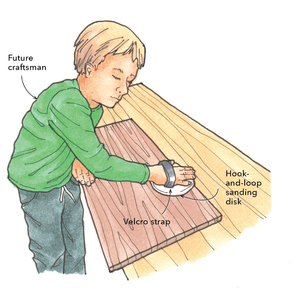






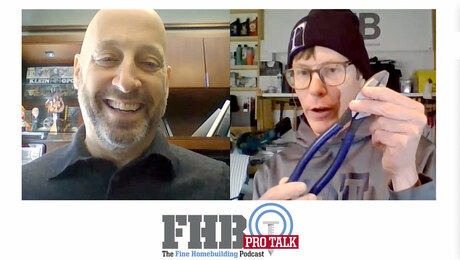
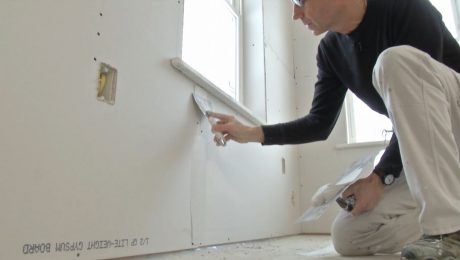
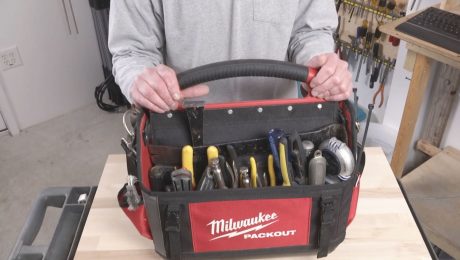

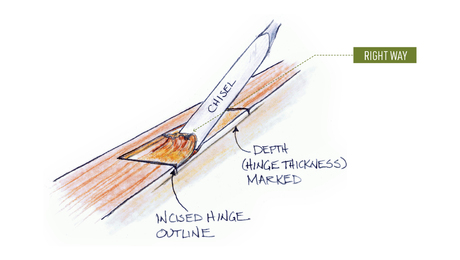
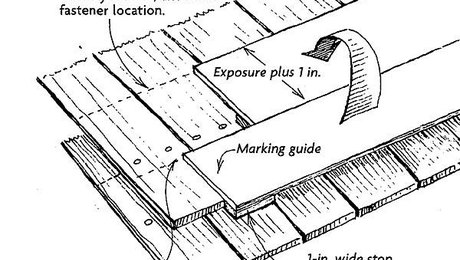










View Comments
The TV character Monk needed to know this tip for when his second level to check his first level needed to be checked. Seriously though, the placement of the light source across the room is critical here. Science class taught that light sources at least 20 feet away cast 'parallel' rays so shadows are then consistent to the object's size. Optometrists use this when you read the eye charts as well e.g. 20/20 vision is seeing clearly at 20 feet.
I must be dumb. I learned the simple method of turning the level end for end, either vertically or horizontally, to discover if the level was indeed true or to adjust calibration. (I had to check several 4 footers at H.F. before finding one that was accurate.--but saved myself a bunch of money over a recognized brand name.) Of course the curvature of the vial determines the precision of the level and I've always got my Wixi for precision to 0.1 degree.
Checking a level for accuracy requires rotating it 180 degrees around the gravitational axis and verifying that the bubble is in the same position. Fortunately, levels are inherently self checking.
In practical terms...
To check the plumb vial, place the level vertically against a nominally vertical surface and note the position of the bubble. Then rotate the level 180 degrees around its vertical axis, so the opposite edge is against the surface. Whether or not the test surface is plumb, the bubble will be in the same position if the level is accurate.
To test the level vial, place the level left to right, on a nominally level surface and note the bubble position. Then rotate it 180 degrees, so the left end is now on the right- if the level is accurate, the bubble will be in the same position.
It's a good idea to make a habit of checking levels regularly, particularly if they've been out of your sight for a few minutes. I've seen people trusting levels that looked like they'd been used for pry bars.
Any deviation of the light from precisely 90° perpendicular and the shadow won't be plumb.